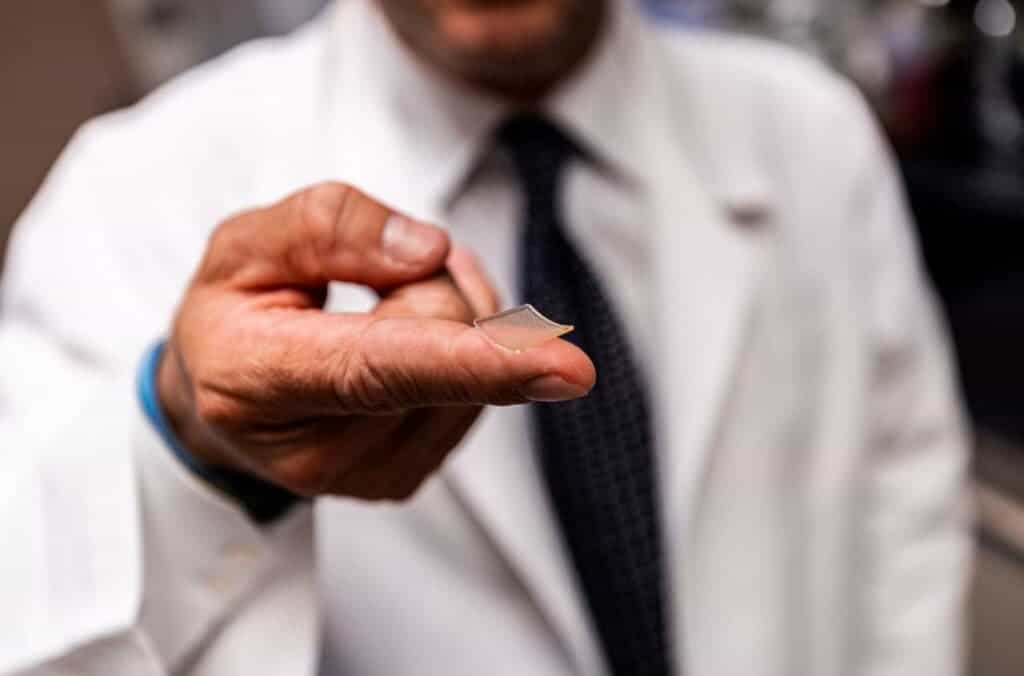
We’re living in the pinnacle of vaccine development as more than 50 research groups around the world are racing to develop an effective and safe vaccine against the novel coronavirus. At the University of Pittsburgh, researchers have developed a vaccine that’s delivered through a tiny patch that sticks to the skin like a Band-Aid. Tests on mice show that the vaccine produces long-lasting antibodies that can prevent infection with the coronavirus.
Protection against the coronavirus could last at least a year
The researchers were previously involved in developing vaccines against SARS and MERS, which started frightening outbreaks in 2003 and 2014. Both SARS-CoV and MERS-CoV are coronaviruses, closely related cousins of the new SARS-CoV-2, which first appeared in Wuhan, China, causing COVID-19.
“We had previous experience on SARS-CoV in 2003 and MERS-CoV in 2014. These two viruses, which are closely related to SARS-CoV-2, teach us that a particular protein, called a spike protein, is important for inducing immunity against the virus. We knew exactly where to fight this new virus,” said co-senior author Andrea Gambotto, M.D., associate professor of surgery at the Pitt School of Medicine. “That’s why it’s important to fund vaccine research. You never know where the next pandemic will come from.”
“Our ability to rapidly develop this vaccine was a result of scientists with expertise in diverse areas of research working together with a common goal,” said co-senior author Louis Falo, M.D., professor and chair of dermatology at Pitt’s School of Medicine.
Coronaviruses like SARS-CoV-2 — the virus that causes the COVID-19 respiratory illness — infect individuals by hijacking their cells. The commandeered cells then start replicating viral material. Each infected cell can release millions of copies of the virus before the cell finally breaks down and dies. Then, these viruses can infect nearby cells or end up in droplets that escape the lungs (the main site of infection for SARS-CoV-2) through sneezing or coughing, thereby potentially infecting other people.
The coronavirus is named after the crownlike spikes that protrude from its surface. It is through these spikes that the virus injects genetic material into host cells in order to replicate.
The new vaccine, called PittCoVacc (short for Pittsburgh Coronavirus Vaccine), uses lab-made viral proteins to prime the immune system against the coronavirus. This is a very conventional vaccine, resembling how current flu shots work. Elsewhere, more experimental vaccines against the coronavirus have entered clinical trials, such as the mRNA vaccine candidate developed by Moderna.
However, instead of a shot, the PittCoVacc is delivered through a fingertip-sized patch made of 400 tiny needles through which the spike protein fragments are delivered into the skin. The needles are entirely made of sugar and the viral protein pieces, so they simply dissolve into the skin.
“We developed this to build on the original scratch method used to deliver the smallpox vaccine to the skin, but as a high-tech version that is more efficient and reproducible patient to patient,” Falo said. “And it’s actually pretty painless — it feels kind of like Velcro.”
To make the vaccine, the viral protein fragments are generated in cultured cells engineered to express the spikes. This ‘cell factory’ is made of layers upon layers of cells, which can be stacked to scale yield.
The vaccine can be stored at room temperature
Once manufactured, the vaccine can be stored at room temperature, which eliminates the need for refrigeration during transport and storage. The coronavirus pandemic is affecting literally every country in the world, so this feature might prove highly important in developing countries with poor infrastructure.
“For most vaccines, you don’t need to address scalability to begin with,” Gambotto said. “But when you try to develop a vaccine quickly against a pandemic that’s the first requirement.”
Experiments on mice showed that the PittCoVacc led to a surge of antibodies against SARS-CoV-2. The mice haven’t been monitored long-term since the research was accelerated for obvious reasons. However, if the generated antibodies are anything like those produced by the MERS-CoV vaccine, they should neutralize the coronavirus for at least a year.
The vaccine was submitted for approval by the U.S. Food and Drug Administration so that phase I human clinical trials may begin soon.
But, like all vaccines currently being researched against the coronavirus, it will take at least 12-18 months for it to reach people.
“Testing in patients would typically require at least a year and probably longer,” Falo said. “This particular situation is different from anything we’ve ever seen, so we don’t know how long the clinical development process will take. Recently announced revisions to the normal processes suggest we may be able to advance this faster.”
The work was described in a study that appeared today in the journal EBioMedicine.









